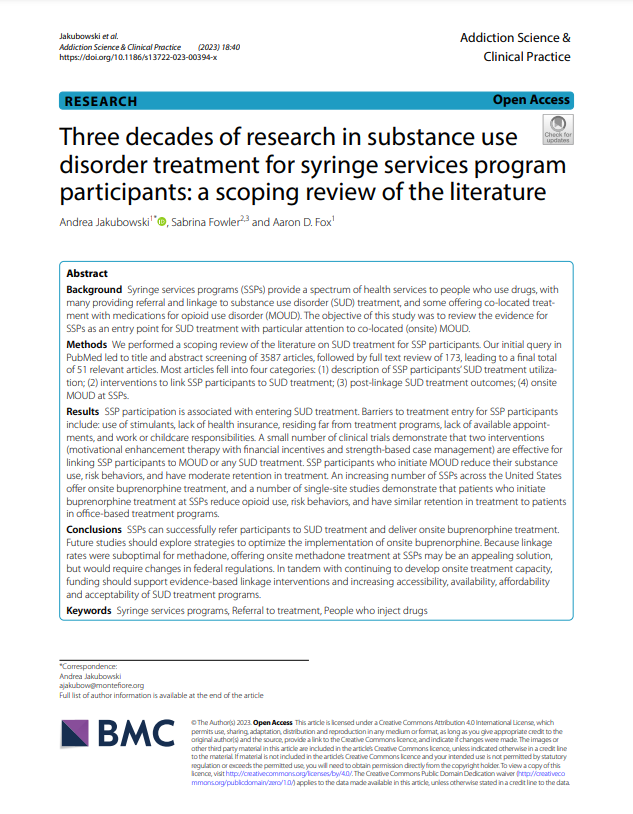Headline
Syringe Services Programs can function as entry points to substance use disorder treatment and provide onsite medications for opioid use disorder.
Context
Syringe Services Programs (SSPs) are community-based prevention programs that provide a range of services including the provision of sterile equipment for safer substance use, overdose prevention, case management, counseling, diagnostic testing for HIV or hepatitis C virus, and access to other health and supportive services for people who use drugs (PWUD). Many studies have examined SSPs as a potential entry point to substance use disorder (SUD) treatment given the low barrier to care for PWUD in these settings. This scoping review examines literature on SUD treatment for SSP participants, with particular attention to co-located medications for opioid use disorder (MOUD) at SSPs.
Findings
The authors grouped findings from the scoping review into four key categories: description of SSP participants’ SUD treatment utilization, interventions to link SSP participants to SUD treatment, post-linkage SUD treatment outcomes, and onsite MOUD at SSPs. There is strong evidence to support that SSPs can successfully refer participants to SUD treatment and moderate evidence to support their ability to successfully deliver onsite buprenorphine treatment. This study identified several clinical trials of SSP-based buprenorphine treatment programs that have published results suggesting that widespread implementation of buprenorphine treatment at SSPs could dramatically decrease overdoses and OUD-related costs.
Takeaways
There is strong evidence to support the use of SSPs to facilitate entry to SUD treatment and services, particularly for PWUD not engaged in treatment. This scoping review highlights several studies that offer models of successful collaboration between harm reduction programs and traditional SUD treatment delivery.

